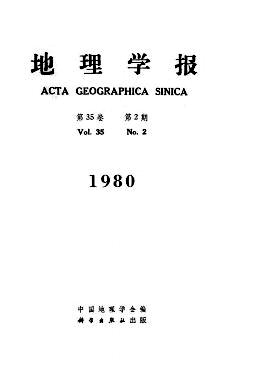Zhong Gongfu
The system of "Mulberry-Dyke-Fish-Pond" is a peculiar farming method develop-ed by the working people as a result of making full use of land and water resources in their longtime farming practice in the Zhujiang Delta. It is an interrelated system which brings into full play the production potential and makes reasonable use of land-water resources. It promotes the development of different branches of agriculture and its related processing industry. "Mulberry-Dyke-Fish-Pond" is a complete scientific ecosystem.Mulberry-Dyke-Fish-Pond is characterized by its complex and diversified cycle. Mulberry-growing, sericulture and fish-breeding are interrelated. They promote each other and their circulating operation is complex and diversified. In terms of the food chain, the whole operation follows the following pattern: mulberry leaves are fed to silk-worms, silkworm ’excreta to fish and mud from the fish pond is used as good manure for mulberry trees. This circulating process begins with mulberry-growing, then moves on to sericulture and ends up with fish fanning. In this closely related process, eachlinks has either positive or adverse effect on the other. There is a popular saying in Shunde which goes something like : The more luxuriant the mulberry trees, the stronger the silk-worms, the fatter the fish, the richer the pond, the more fertile the dyke and the more the cocoons. This illustrates to the full the circulation relation of Mulberry-Dyke-Fish-Pond. In this system the mulberry tree is the producer making use of sun-light energy to produce mulberry leaves, the silk-worm is the first consumer eating mul-berry leaves, the fish is the secondary consumer having silkworm excreta (and pupas) ae food, the plankton in the pond is the reduction agent bringing the organic sub-stances such as N, P, K back to the pond.The producing cycle of mulberry-growing, sericulture and fish farming has as its base the circulation of substance in soil, water and living beings between pond and dyke. The relations of mulberry trees, silkworms and fish to dyke, pond and atmo-sphere are those of substance-energy exchange and transformation between living beings and environment. Any change in morphology, productivity, quality etc. during the growing process of mulberry trees, silkworms and fish is the result of interaction between mulberry trees, silkworms, fish and environments such as temperature, light, water, air, soil etc.With an interdependent relationship between the living beings and environment, the Mulberry-Dyke-Fish-Pond is a complete ecosystem in which substance circulates and energy exchanged and transformed. It is a scientific farming method as well. In various cycles, big or small, the mulberry is the base and the fish pond is the key link. The pond can feed fish as well as the dyke. "With the pond being taken good care of, there can be high yield in fish, and that also promotes the output of other crops.The role of the Mulberry-Dyke-Fish-Pond is:(1) Bringing into full play the potential of the local resources. Located in the southern sub-tropical zone, each year large quantities of mulberry leaves are collected, enough to feed eight to nine batches of silkworms, hence eight to nine batches of co-coons. Make use of the fish fry from the middle and lower parts of the Xijiang Eiver in the development of pond fish farming. Make use of river water and tidal water for self-control drainage and irrigation all the year round. Use mud from rivers and ponds as an impotant manure. Use silkworm excreta to feed fish. Thus the land is being made full use of.(2) Abundant sources of income and huge economic gains. The average income from every mu of mulberry trees (including that from mulberry leaves, cocoons, fish, vegetables, dry-land crops and mulberry branches) is 400- 500 yuan. If cocoons are exported, income will be even more, about four times more than that from rice, three times more than that from sugarcane.(3) A large labour force can be accommodated and needed to do both’ heavy and light workg.
